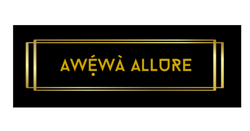Ever wondered if your hair is, indeed, at its best health or is your hair stylist’s word the holy grail when it comes to your hair? As a brand that is passionate about seeing hair grow healthy and thrive, the topic of the day is one of the most common topics in the beauty world - healthy hair. We see so much information online, from shiny ads to quick-fix products, and it can be overwhelming to separate fact from fiction. So, let’s break it down and get to the root of what healthy hair really is, what it isn't, and some of the biggest myths that surround this topic.
What is Healthy Hair?
Healthy hair isn't just about how it looks; it’s about how it behaves, feels, and grows. Some attributes of healthy hair truly include:
Healthy hair has good strength and elasticity. It can stretch slightly without breaking and bounce back without becoming limp or fragile. This is a sign that the hair's inner structure is intact and well-nourished.
2. Moisture Balance:Properly hydrated hair retains enough moisture to be soft and flexible. It shouldn't feel brittle or excessively dry, which is a sign of dehydration.
3. Shine and Smoothness:Healthy hair naturally reflects light because the cuticle layer (the outermost part of the hair shaft) lies flat and smooth. When your hair’s cuticles are healthy, they lock in moisture and prevent damage from environmental factors like pollution and UV rays.
4. Minimal Shedding and Breakage:Shedding up to 50-100 hairs per day is normal, but healthy hair shouldn't break easily. If you notice lots of breakage, it could be a sign that your hair is weakened.
5. Scalp Health:Healthy hair starts with a healthy scalp. If your scalp is free from irritation, flakiness, or excess oil, it creates the right environment for hair to grow strong and long.
What Healthy Hair Is NOT
There are a lot of myths floating around about what healthy hair should look like, but they are what they are – myths. What then should we not have sleepless nights over when our hair is not?
1. Perfectly Smooth or Pin-Straight:Healthy hair doesn’t mean it has to be perfectly smooth or without frizz. Texture plays a huge role in how the hair behaves. For instance, curly or coily hair may not look as “sleek” as straight hair, but that doesn’t mean it’s unhealthy. It just has different moisture and care needs.
2. Shiny in Every Situation:While shine can be a sign of healthy hair, it isn’t the only marker of health. Hair that is textured, curly, or color-treated may not have the same shine as naturally straight hair, but it can still be perfectly healthy.
3. Free of Split Ends Forever:Even the healthiest hair can develop split ends over time, especially if it’s exposed to heat styling, chemicals, or environmental stress. The key is keeping up with regular trims and treating your hair with care.
4. Thick Hair:Not everyone’s hair is naturally thick and having fine or thin hair doesn’t mean it’s unhealthy. Hair thickness is often genetically determined and doesn't necessarily reflect how healthy your hair is.
Common Misconceptions About Healthy Hair
There are many misconceptions out there that confuse people about how to achieve healthy hair. Let’s bust some of these myths:
1. Trimming Your Hair Makes It Grow FasterThis is one of the most persistent myths. While trimming your hair doesn’t affect its growth rate, it helps maintain the hairs overall health by removing split ends. Damaged ends can make your hair look shorter and frizzier, so trimming gives the appearance of healthier, longer hair.
2. Hair Products Can “Repair” Split EndsNo product can actually “repair” split ends. Once the hair shaft is split, the only permanent solution is to trim it off. However, some treatments can temporarily seal the ends and make them less noticeable.
3. Washing Hair Every Day is BadHow often you wash your hair should depend on your hair type and lifestyle. For some, daily washing is necessary due to oil build-up, while others can wash their hair every few days. The key is using a gentle shampoo that doesn’t strip away your hair’s natural oils.
4. The More Products, The Healthier Your HairUsing too many products can actually do more harm than good. Overloading your hair with styling products, treatments, and oils can cause buildup, which weighs down your hair and may lead to scalp irritation. Instead, focus on a simple, targeted routine with ingredients that meet your hair’s specific needs.
5. Air-Drying is Always Better Than Blow-DryingWhile air-drying is often considered gentler than using heat, it’s not always the best choice for everyone. For those with very porous hair, air-drying can cause frizz, tangling, and even weaken the strands. If you blow-dry, using a heat protectant and a cool setting can help reduce the damage.
The Bottom Line
Healthy hair is all about balance - keeping your hair strong, moisturized, and free from excessive damage. It is also important to note that “healthy” hair doesn’t look the same for everyone. Hair can be healthy in a variety of textures and types, and it is essential to tune into your own hair’s specific needs.
Educating yourself about the truth behind hair care myths and focusing on a consistent, nourishing routine will go a long way in keeping your hair in its healthiest state!References
- Hair growth facts: The Biology of Hair Growth (Journal of Investigative Dermatology, 2016)
- Split end treatments and what they actually do (Journal of Cosmetic Dermatology, 2017)
- Healthy hair: "The structure and properties of hair (Journal of Cosmetic Science, 2015)
- Moisture balance and elasticity: Understanding hair structure and damage (International Journal of Trichology, 2018)
